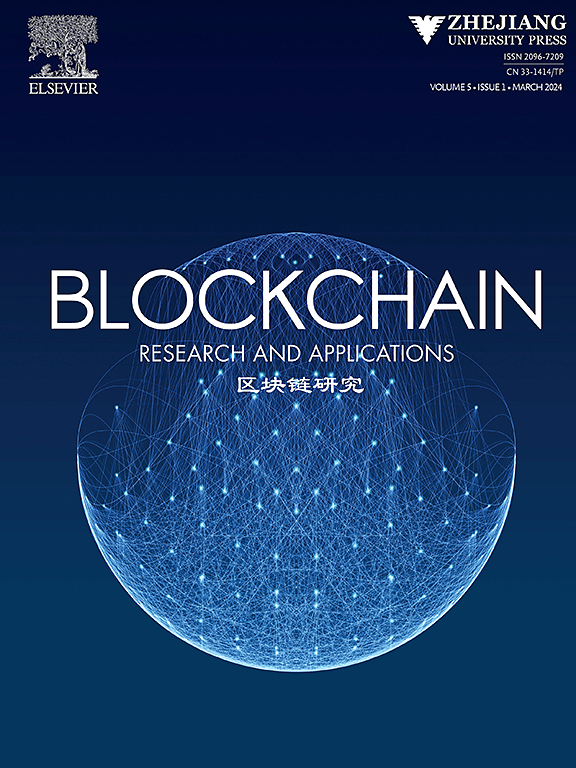Prism blockchain enabled Internet of Things with deep reinforcement learning
IF 5.6
3区 计算机科学
Q1 COMPUTER SCIENCE, INFORMATION SYSTEMS
引用次数: 0
Abstract
This paper presents a Deep Reinforcement Learning (DRL) based Internet of Things (IoT)-enabled Prism blockchain. The recent advancements in the field of IoT motivate the development of a secure infrastructure for storing and sharing vast amounts of data. Blockchain, a distributed and immutable ledger, is best known as a potential solution to data security and privacy for the IoT. The scalability of blockchain, which should optimize the throughput and handle the dynamics of the IoT environment, becomes a challenge due to the enormous amount of IoT data. The critical challenge in scaling blockchain is to guarantee decentralization, latency, and security of the system while optimizing the transaction throughput. This paper presents a DRL-based performance optimization for blockchain-enabled IoT. We consider one of the recent promising blockchains, Prism, as the underlying blockchain system because of its good performance guarantees. We integrate the IoT data into Prism blockchain and optimize the performance of the system by leveraging the Proximal Policy Optimization (PPO) method. The DRL method helps to optimize the blockchain parameters like mining rate and mined blocks to adapt to the environment dynamics of the IoT system. Our results show that the proposed method can improve the throughput of Prism blockchain-based IoT systems while preserving Prism performance guarantees. Our scheme can achieve 1.5 times more system rewards than IoT-integrated Prism. In our experimental setup, the proposed scheme could improve the average throughput of the system by about 6,000 transactions per second compared to Prism.
利用深度强化学习支持物联网的 Prism 区块链
本文介绍了一种基于深度强化学习(DRL)、支持物联网(IoT)的棱镜区块链。物联网领域的最新进展推动了用于存储和共享海量数据的安全基础设施的发展。区块链是一种分布式、不可更改的分类账,是物联网数据安全和隐私的潜在解决方案。由于物联网数据量巨大,区块链的可扩展性成为一项挑战,它应优化吞吐量并处理物联网环境的动态变化。扩展区块链的关键挑战是在优化交易吞吐量的同时保证系统的去中心化、延迟和安全性。本文针对区块链物联网提出了一种基于 DRL 的性能优化方法。我们将最近很有前途的区块链之一 Prism 作为底层区块链系统,因为它具有良好的性能保证。我们将物联网数据集成到 Prism 区块链中,并利用近端策略优化(PPO)方法优化系统性能。DRL 方法有助于优化挖矿率和已挖区块等区块链参数,以适应物联网系统的环境动态。我们的研究结果表明,所提出的方法可以提高基于 Prism 区块链的物联网系统的吞吐量,同时保留 Prism 的性能保证。与物联网集成 Prism 相比,我们的方案可实现 1.5 倍的系统奖励。在我们的实验设置中,与 Prism 相比,我们提出的方案可以将系统的平均吞吐量提高约 6000 笔/秒。
本文章由计算机程序翻译,如有差异,请以英文原文为准。
求助全文
约1分钟内获得全文
求助全文
来源期刊
CiteScore
11.30
自引率
3.60%
发文量
0
期刊介绍:
Blockchain: Research and Applications is an international, peer reviewed journal for researchers, engineers, and practitioners to present the latest advances and innovations in blockchain research. The journal publishes theoretical and applied papers in established and emerging areas of blockchain research to shape the future of blockchain technology.

 求助内容:
求助内容: 应助结果提醒方式:
应助结果提醒方式:


